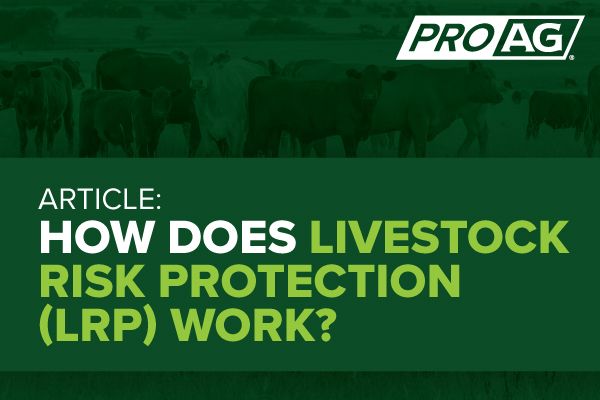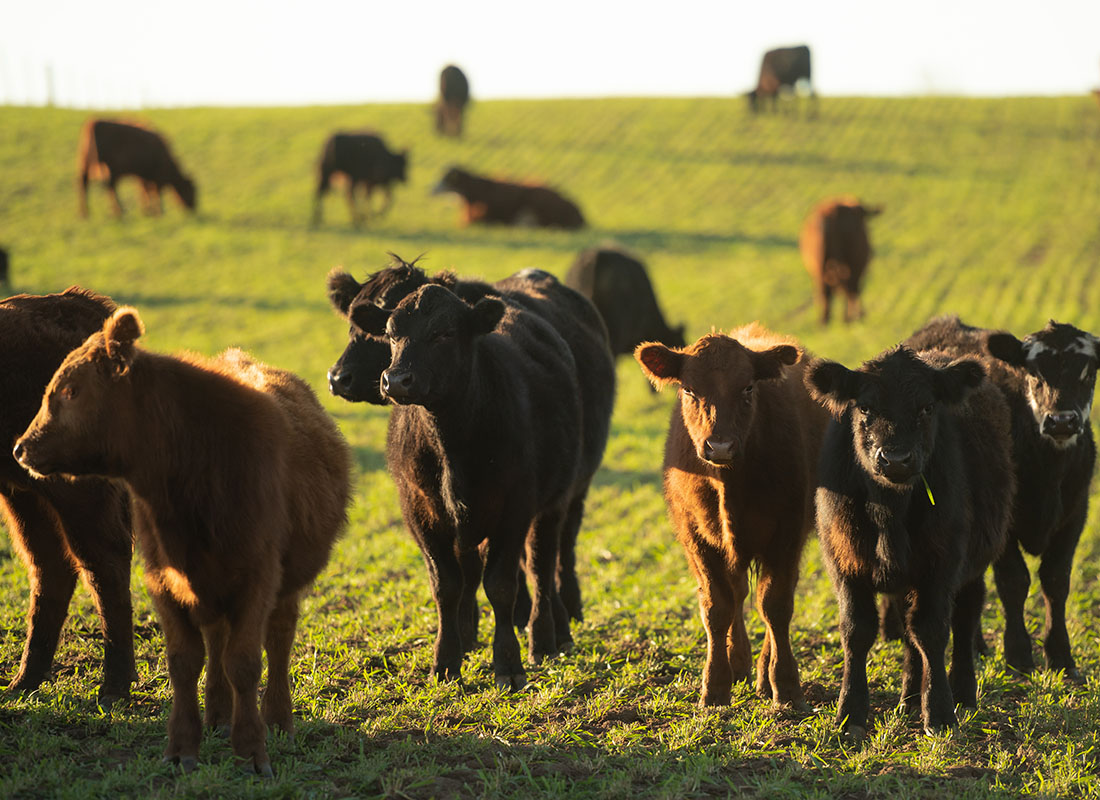Comprehending Livestock Risk Defense (LRP) Insurance Policy: A Comprehensive Guide
Navigating the realm of livestock risk protection (LRP) insurance can be a complicated venture for numerous in the farming field. From just how LRP insurance functions to the various protection options offered, there is much to discover in this extensive guide that might potentially shape the way livestock producers come close to threat monitoring in their organizations.

How LRP Insurance Policy Functions
Occasionally, recognizing the auto mechanics of Livestock Threat Security (LRP) insurance can be complicated, but breaking down just how it works can give clearness for farmers and ranchers. LRP insurance is a threat management device designed to shield livestock manufacturers against unforeseen price declines. The plan allows manufacturers to establish a protection degree based on their details needs, picking the number of head, weight variety, and insurance coverage cost. As soon as the policy is in area, if market prices drop below the protection rate, producers can file a case for the difference. It is essential to keep in mind that LRP insurance is not an earnings guarantee; instead, it concentrates only on price danger defense. The coverage period normally varies from 13 to 52 weeks, providing versatility for manufacturers to pick a duration that aligns with their production cycle. By using LRP insurance policy, farmers and ranchers can reduce the monetary threats linked with varying market costs, making certain greater security in their procedures.
Eligibility and Coverage Options

When it pertains to insurance coverage options, LRP insurance coverage uses manufacturers the flexibility to select the protection degree, insurance coverage duration, and recommendations that best fit their threat monitoring needs. Coverage degrees generally vary from 70% to 100% of the expected finishing worth of the insured animals. Manufacturers can also select coverage periods that align with their production cycle, whether they are insuring feeder cattle, fed cattle, swine, or lamb. Recommendations such as cost danger security can additionally tailor insurance coverage to shield against adverse market fluctuations. By understanding the eligibility standards and insurance coverage alternatives readily available, animals manufacturers can make enlightened choices to take care of danger successfully.
Pros and Cons of LRP Insurance Coverage
When assessing Livestock Risk Security (LRP) insurance, it is important for animals producers to consider the disadvantages and benefits fundamental in this danger management device.

One of the primary advantages of LRP insurance coverage is its capability to supply defense versus a decrease in animals costs. Additionally, LRP insurance coverage provides a level of versatility, allowing manufacturers to tailor coverage degrees and plan durations to fit their particular needs.
One restriction of LRP insurance is that it does not shield versus all find more info kinds of dangers, such as disease break outs or natural catastrophes. It is important for producers to very carefully assess their specific risk direct exposure and financial scenario to identify if LRP insurance is the ideal risk administration device for their operation.
Comprehending LRP Insurance Premiums

Tips for Maximizing LRP Perks
Maximizing the benefits of Animals Threat Defense (LRP) insurance needs critical planning and aggressive threat administration - Bagley Risk Management. To maximize your LRP coverage, think about navigate here the following suggestions:
Regularly Assess Market Conditions: Keep informed about market trends and cost changes in the animals market. By checking these variables, you can make informed choices concerning when to acquire LRP coverage to protect against possible losses.
Establish Realistic Insurance Coverage Degrees: When choosing protection levels, consider your production costs, market price of animals, and possible dangers - Bagley Risk Management. Setting realistic coverage degrees ensures that you are properly safeguarded without overpaying for unneeded insurance policy
Expand Your Protection: As opposed to counting only on LRP insurance policy, think about diversifying your threat monitoring methods. Integrating LRP with other threat administration tools such as futures agreements or alternatives can provide detailed protection versus market uncertainties.
Testimonial and Change Coverage Routinely: As market problems alter, periodically assess your LRP protection to guarantee it lines up with your current threat direct exposure. Adjusting insurance coverage levels and timing of acquisitions can help maximize your risk defense technique. By adhering to these ideas, you can optimize the benefits of LRP insurance policy and protect your animals operation against unpredicted dangers.
Verdict
In final thought, livestock danger defense (LRP) insurance coverage is a beneficial tool for farmers to take care of the financial threats connected with their animals operations. By comprehending just how LRP works, eligibility and insurance coverage alternatives, as well as the advantages and disadvantages of this insurance policy, farmers can make informed decisions to secure their incomes. By very carefully considering LRP premiums and executing techniques to take full advantage of advantages, farmers can minimize prospective losses and make certain the sustainability of their operations.
Livestock producers interested in acquiring Livestock Danger Defense (LRP) insurance policy can explore a range of eligibility requirements and protection choices customized to their certain animals procedures.When it comes to insurance coverage alternatives, LRP insurance policy supplies manufacturers the adaptability to pick the insurance coverage degree, insurance coverage duration, and recommendations that finest fit their risk management needs.To understand the complexities of Livestock Risk Security (LRP) insurance coverage completely, understanding the elements influencing LRP insurance costs is crucial. LRP insurance costs are established by numerous aspects, including the protection level chosen, the anticipated cost of livestock at the end of the protection period, the kind of animals being insured, and the size of the insurance coverage duration.Review and Adjust Coverage Discover More Here Consistently: As market problems transform, occasionally examine your LRP protection to ensure it straightens with your present risk direct exposure.